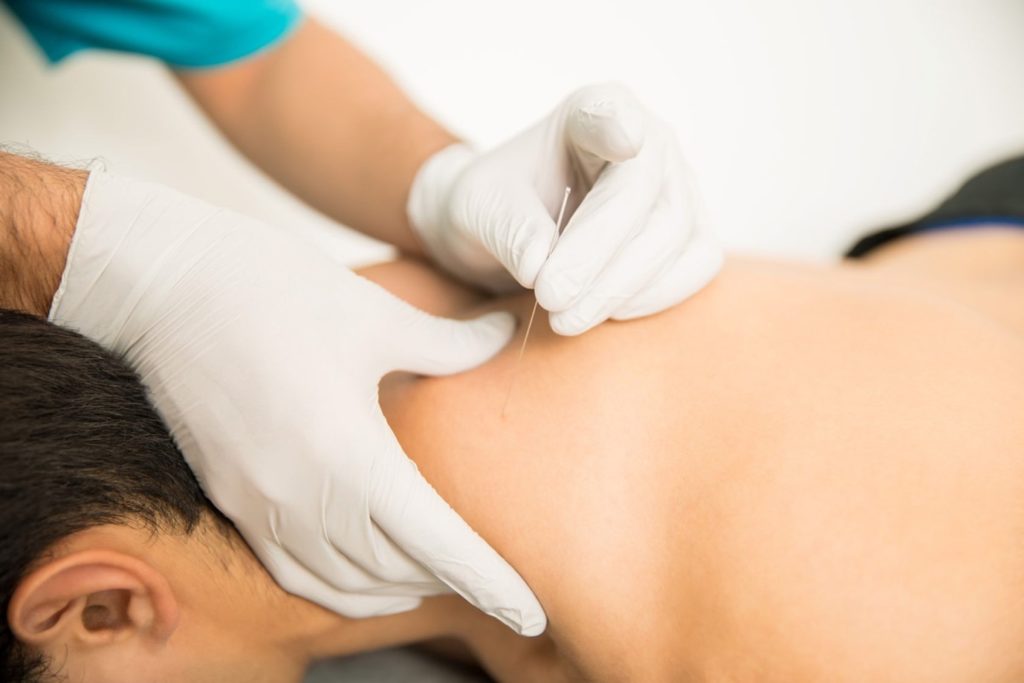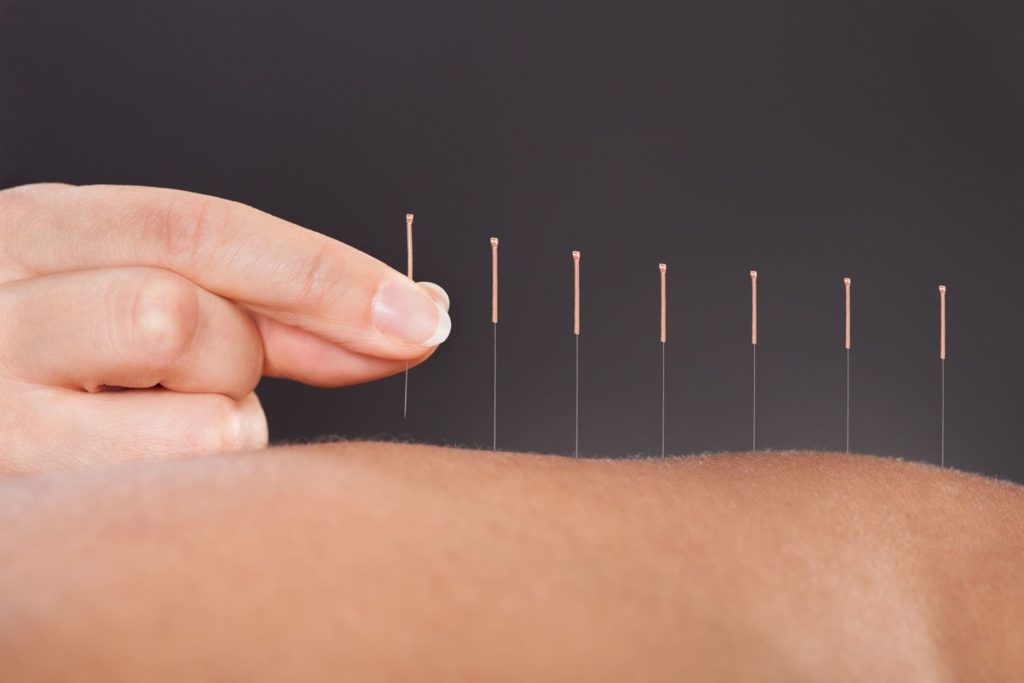Dry needling is often referred to as a westernised version of acupuncture,
where extremely thin needles are inserted into the skin and muscle in order to
reduce muscle tension and increase recovery to any injured tissue. Dry
needling is great way to release trigger points, reduce pain and restore
restricted movement.

Dry needling for the most part isn’t painful, initially there is a short sharp
sensation of the needle hitting the skin then it should be generally painless.
Sometimes we can feel a dull ache when we hit a trigger point, this will subside
when the muscle releases.
Post needling, it is common to feel muscle tightness as there is a degree of
muscle damage done with this modality. This can linger from 2-48 hours
depending from person to person. It is recommended to use heat on the area
and stretch for the rest of the day following the dry needling to help with any
acute discomfort.
When do we recommend dry needling?
For some people that are in too much pain for hands on techniques dry
needling is a really good tool to release a muscle without having to deal with
the pain of massage when it is too sensitive. However dry needling can be
effective with chronic pain, muscle guarding or spasming and many other
presentations. It will depend from practitioner to practitioner on when they
choose to utilise dry needling.
How does dry needling work?
We are still not 100% sure of the mechanism behind dry needling but the
evidence is becoming stronger to support its efficacy. There is a growing body
of data that shows that dry needling has a significant effect on muscular and
neurological level on the target tissue. The two major ways that dry needling
can affect muscle tone are:
• Trigger point needling – Trigger points are essentially what people call ‘knots’
in their muscles. To put it simply, Trigger points are segments of muscle that
become fixed in a contracted position. The sustained tightening of the muscle
not only limits range of motion but becomes painful to touch or when moving
that muscle. When we needle these trigger points it relaxes the muscle, this
has been shown through studies that monitor this process via
Electromyography (EMG) imaging.
• Neural Sensitisation needling – Essentially neural sensitisation is when the
nervous system becomes overactive into a particular area. This can be caused
my many things (repetitive stress on a muscle, injury, anxiety etc..), initially the
nervous system guards the area for protection, but overtime it can become
stuck in an overactive state which causes ‘warning signals’ to be sent to the
area causing pain hypersensitivity. Dry needling can work wonderfully in this
scenario because our nervous system can only process one stimulus at a time.
By inserting the Needle to the area, it acts as a ‘reset’ for the nervous system
and downregulates any of these pain signals that have been overactive.
Who do I see for dry needling?
All Myotherapists undergo a year of training to be qualified in dry needling and
is a mandatory part of the qualification. However, any allied health care
professional is able to undergo post-grad courses to practice dry needling. This
includes physio’s, osteo’s, chiro’s etc… If this is something you think could
benefit you, feel free to book in to the clinic and we can discuss it as a possible
treatment option for you!
